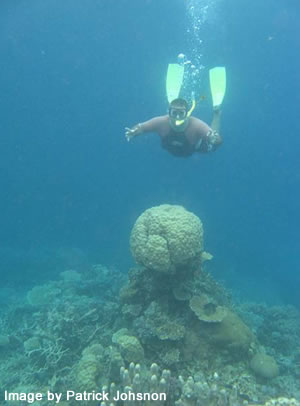Plan to protect Great Barrier Reef's biodiversity
Friday 17 August 2012
Plan to protect Great Barrier Reef Biodiversity
The Great Barrier Reef Marine Park Authority (GBRMPA) is urging the community to comment on a roadmap to protect at-risk plants, animals and habitats of the Great Barrier Reef.
In releasing the draft Great Barrier Reef Biodiversity Conservation Strategy 2012 today GBRMPA Chairman Dr Russell Reichelt said it identifies at-risk species and habitats, and is supported by vulnerability assessments that give an overview of the species, their health and status, as well as recommending actions to protect them.
It follows the Great Barrier Reef Outlook Report 2009, which highlighted a need for a specific strategy to address threats to the Reef's plants, animals and habitats.
“A strong focus of the strategy is improving inshore biodiversity,” Dr Reichelt said. “It’s these inshore areas where species and habitats are under the greatest pressure from a range of threats including coastal development. The Reef’s zoning plan is protecting biodiversity, and water quality is improving with the Reef Rescue initiative, but more is needed to address cumulative impacts on inshore biodiversity".
“This strategy’s overarching approach is vital when managing such a large, complex ecosystem with so many different species. It allows resources to be directed to those plants and animals that most need our help".
“It also highlights the importance of working with community and industry, improving ecosystem knowledge, and using this to build the Reef's resilience.
Our priority will be working with government, industry, researchers and the community to restore degraded habitats and re-connect coastal ecosystems along the Reef".
This strategy provides a framework for improving biodiversity conservation in the Great Barrier Reef Region. It has been developed in consultation with Australian and Queensland government agencies, researchers, industry representatives and conservation groups.
The strategy's approach includes continuing to foster industry and community stewardship of the Reef, building ecosystem resilience in a changing climate and improving our knowledge to make more informed decisions.
This strategy establishes a process for determining and documenting the habitats, species and groups of species that are potentially ‘at-risk’.
Vulnerability assessments are being completed to identify actions to reduce the threats and pressures facing at-risk biodiversity. Identifying priority habitats and species is vital when managing such a large, complex ecosystem as it allows resources to be directed where help is most needed.
The habitats considered to be potentially at-risk are coral reefs, islands, the lagoon floor, mangroves, open waters and seagrass meadows. The species or species groups considered to be potentially at-risk are the dwarf minke whale, dugong, grey mackerel, holothurians (sea cucumbers, in particular the black teatfish), humpback whale, inshore dolphins, king and blue threadfin salmon, marine turtles, seabirds, sea snakes, sharks and rays (including sawfish) and snapper.“
Local and regional action will be needed to protect species and habitats. For example, we’ll work with our partners including scientists, the Queensland Government, natural resource management groups, Traditional Owners and local communities to identify the best ways to rehabilitate wetlands so they are healthy and support the inshore area of the Reef.
Dr Reichelt said while coastal planning and port expansions were clearly outside of GBRMPA’s jurisdiction, the strategy aimed to improve water quality run-off from land-based activities to the marine environment through its work with industry and the community.
It will help inform the joint Australian and Queensland Government strategic assessment of the Great Barrier Reef World Heritage Area that focuses on sustainable coastal development in the Great Barrier Reef Region.
The strategy and vulnerability assessments are available at www.gbrmpa.gov.au. Consultation on the Great Barrier Reef Biodiversity Conservation Strategy 2012 closes Friday 28 September 2012.


